“The Worst Day in Avengers History”: The Story Behind Avengers Disassembled, From Two of Its Architects
Whenever there’s a transition from one era to another at the Big Two, fans are going to feel heartburn — and they’re going to let those involved know about it. That’s something Marvel is experiencing right now, as X-Men fans worry about what awaits them in the move away from Krakoa. Anything is possible on the other side of that change. That naturally inspires concern, speculation, and so much more.
This isn’t new, of course. These transition points are constants in the superhero genre, and that experience — as well as the response to it — is something both publishers are used to.
One of the most notable examples of this from the history of superhero comics was published 20 years ago. It was a four issue storyline that featured everything you could imagine from this type of tale. An endless onslaught of villains! A million guest stars! The destruction of an iconic location! Character deaths! A long-standing hero breaking bad! You name it, this comic had it. More than that, it led to a complete status quo change for the franchise it belonged to, helping turn what was already a big moment into something more.
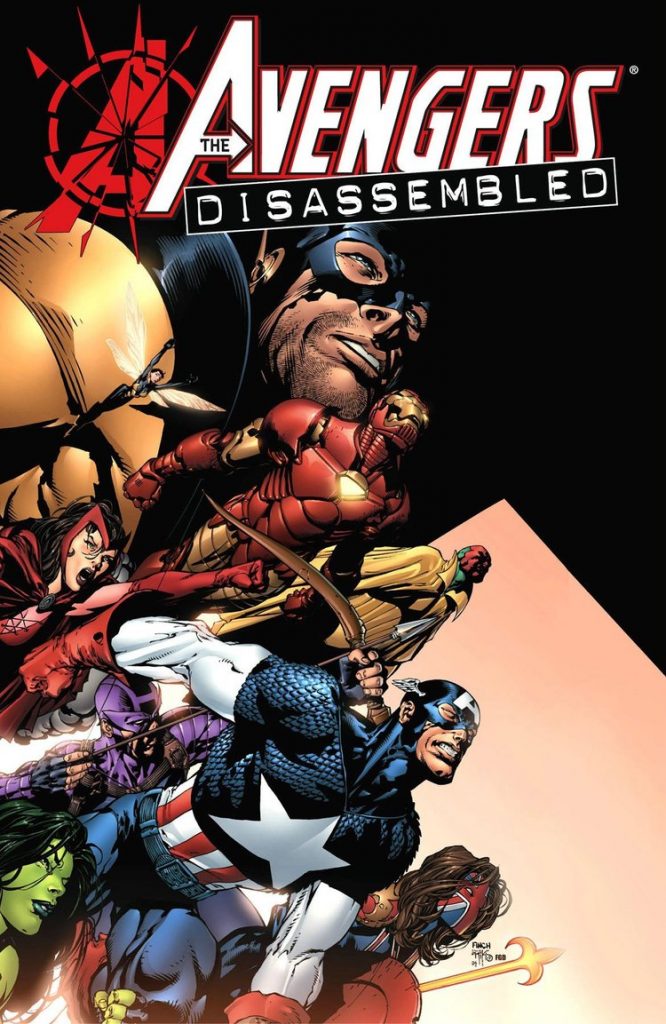
That was Avengers Disassembled, an arc from writer Brian Michael Bendis, penciler David Finch, inker Danny Miki, colorist Frank D’Armata, and letterer Richard Starkings that took place in Avengers #500 to 503 back in 2004. Labeled as “The Worst Day in Avengers History” in its build-up, it’s the rare example of one of these stories that lived up to its billing — and then some.
While it was polarizing upon its release, 29 it led to one of the most creatively fertile and commercially successful periods the franchise has ever seen, starting with Bendis and Finch’s New Avengers #1 that came in its wake. More than that, it was the beginning of one of the most prolific partnerships in Marvel’s modern era, with Bendis and Editor Tom Brevoort’s collaboration helping define an uncommonly strong period for the publisher.
Whatever your opinion of it is, Avengers Disassembled was a massive story. In the events that transpired in its pages. In the conversation surrounding it. In the impact it had down the line. And with its 20th anniversary 30 and another of those moments of transition nearly upon us, 31 it felt like the right time to revisit Avengers Disassembled and how it came to be.
But even though this was a sprawling storyline with a bevy of tie-ins, there were two key people at the heart of it: the editor in charge of keeping the Avengers ship on track and the ascendant writer there to shake it all up. That’s why it felt right to keep this one focused on the main Avengers Disassembled story and the key folks behind it in Bendis and Brevoort, 32 even though there’s a version of this that could have been considerably broader. That’s what this is: the oral history of Avengers Disassembled, and how two first-time collaborators had to tear the Avengers down just so they could build them right back up.
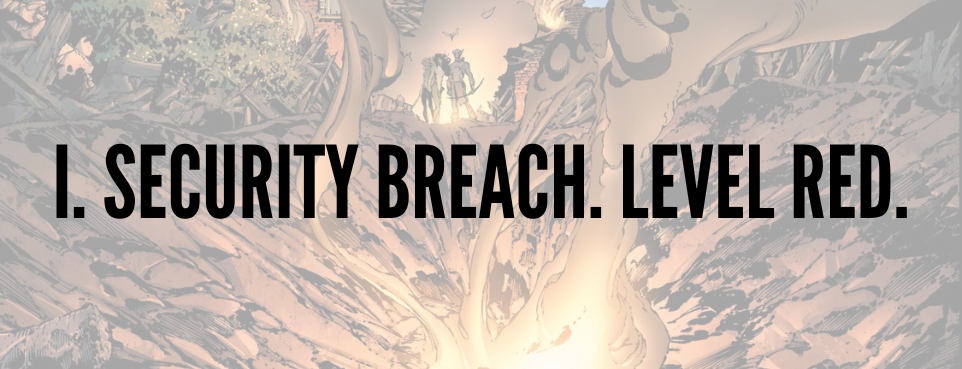
For many in 2024, Marvel is synonymous with The Avengers. Earth’s Mightiest Heroes aren’t just a super team but the super team, the headliners of the biggest media franchise of the past 16 years. It might be hard to fathom this squad as anything but that. And yet, back when the journey to Avengers Disassembled began, they were in a slightly different place.
Tom Brevoort (Editor of Avengers Disassembled and New Avengers): When we get to this period, 33 Avengers was not a top 10 seller. But it still sold respectably, and it still carried its weight as an upper midlist title. It had good talent on it, and it was generally well regarded. It just wasn’t as fresh and exciting as what was going on in the Ultimate line.
Brian Michael Bendis (Writer of Avengers Disassembled and New Avengers): (The Avengers) were doing absolutely fine.
Brevoort: Geoff (Johns) had signed an exclusive deal with DC, so we had to replace the writer on Avengers. And this was in the middle of the days when (then-Marvel President) Bill Jemas was at his craziest, so I needed to cast somebody that I could get Bill and (then-Marvel Editor-in-Chief) Joe (Quesada) to approve.
So, we ended up with Chuck (Austen).
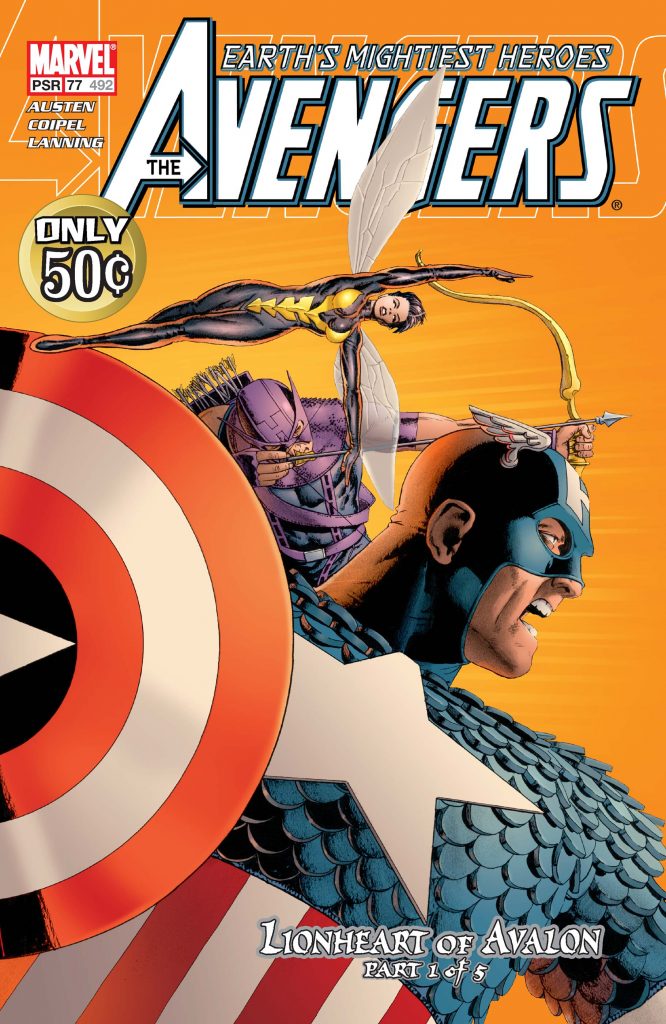
Austen’s first issue was January 2004’s Avengers #77, and his run was troubled from the start. As Brevoort said, “almost every story he did wasn’t really the story he originally pitched by the time it got to the page.” The demands of leadership and Marvel’s own universe resulted in necessary adjustments, something that made delivering a quality title a tricky proposition. They still had big plans, though, as Brevoort, Austen, and artists Olivier Coipel and Scott Kolins knew they were on their way to a big anniversary issue in Avengers #500, which was set to arrive later that year. The team was already well into plans for that — and more.
Brevoort: Chuck had written a script for Avengers #500. Not only did he write it but spinning out of that Avengers #500 was a launch for this book that was All-New Invaders.
Bendis: Which I did not know.
Brevoort: The only reason it wasn’t being drawn yet was because Scott Kolins was still drawing the issue before. But it was that close.
Amidst all this, Marvel was going through a bit of a transition, as well. Its focus wasn’t even on its original line of comics but the Ultimate line, a parallel universe that had its own Avengers in Mark Millar and Bryan Hitch’s The Ultimates. Ultimate Marvel was a major point of emphasis for Jemas and Quesada, creating a situation where the “classic Marvel universe” material wasn’t “well-supported” in the moment, according to Brevoort. That was the way things were. But shortly before this story truly begins, there was a change in leadership. Jemas was out and Dan Buckley was in as the new publisher of Marvel. This was big for two reasons, one of which was Brevoort’s own health. He had an “incredibly contentious” relationship with Jemas.
Brevoort: He and I did not see eye to eye and did not get along. My job was not fun at all, to the point I would be thinking to myself on a daily basis, “Is today going to be the day that I’m just going to blow a gasket and keel over, or is today going to be the day that I hurl him down an elevator shaft?”
One of these two things is going to happen eventually.
The other reason it was important was it created an opportunity for the original line of Marvel comics to retake its place in the hierarchy, if only because of where Buckley’s interest lied.
Bendis: The Ultimate line took off in a way that was beyond what anyone was hoping for.
Brevoort: The Ultimate Universe was the new hotness for a couple of years.
Bendis: It just felt like (Ultimate) Spider-Man and Ultimates were landing hard, and they were like, “Oh, well, let’s not do that to the detriment of the ‘main line’ of comics.”
Brevoort: Bill cared about and was focused on (the Ultimate universe), and Dan was more invested in the classic Marvel universe. So once Dan came in, the emphasis naturally shifted back to, “What can we do to push the core books?”
This all led into a Marvel editorial retreat, the first of Buckley’s era at the top. Bendis said it took place in “Marvel’s lawyer’s offices in midtown Manhattan,” with “50 or 60” of its creatives and employees uniting to plan what’s next for the publisher, 34 especially through the prism of what they learned from the success of the Ultimate line. It came at an interesting time for everyone involved, particularly Brevoort, who noted that he was “still very much in a PTSD fight or flight” emotional state after the departure of Jemas. That ensured he was already on the defensive when this retreat took place.
Bendis: It was a unique retreat.
Brevoort: Part of what they wanted to (do) in this meeting was, “Let’s look at all the books, define them, and make sure that that’s the thing we’re delivering.”
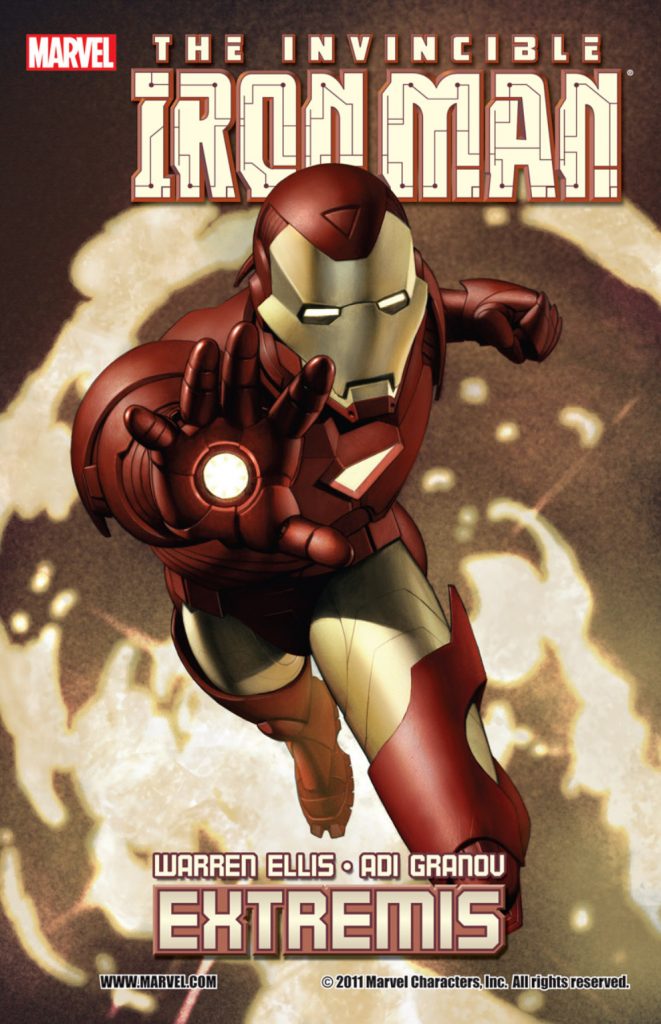
Bendis: The whole thing was, “What’s the purpose of Iron Man?” It was getting down to the roots of what the story was, and out of that conversation came Extremis. 35
Brevoort: The conversation came around to Avengers and it went hot and heavy fast. And the reason it went hot and heavy fast as much as anything was Mark (Millar) and Brian were both there.
Bendis: Mark and I both had strong takes on what team books are and what they should be.
Brevoort: What Mark said essentially was, “When I was a kid growing up, I would buy Justice League of America. The reason I would buy Justice League of America is I would get all the best superheroes in one story. Why is it that the Avengers doesn’t have all the best guys in it?” And this became the conversation that dominated this setup.
Bendis: My bugaboo from when I was a kid was, “Why aren’t Spider-Man and Wolverine on the Avengers? Why aren’t the Avengers the six coolest people in the Marvel Universe?”
By the end of that conversation, (Brevoort’s) blood looked like it was boiling.
Brevoort: Here’s a room of people, most of whom have nothing to do with my book and have had nothing to do with a book that I’ve been having to put out and push without having access to the same kind of resources or the same kind of support that other stuff did, sitting around saying, “Well, it should be completely different, and why is it like this?” So, my back was up from the jump, and I argued back on all these points.
Bendis: He already has a Bluto from Popeye look to him, and it looked like steam was coming out of his ears like Bluto from Popeye. He was not enjoying me and (Mark) just going, “They could be cooler if they were this, and we know what cool is.” That’s not what we meant. But it certainly was coming off that way.
Brevoort: Most of my arguments about things like why Spider-Man and Wolverine shouldn’t be in the Avengers had less to do with the Avengers and more to do with Wolverine and Spider-Man. Part of the thing that makes Spider-Man work is he has problems balancing his superhero life and his real life, and those problems typically involve money woes, difficulties being in multiple places at the same time, and the impact that being a superhero has on his relationships. So many of those problems just go away if he’s got the Avengers as his buddies on speed dial.
Bendis: I remember the argument was, “Spider-Man’s not an Avenger.” That was the desk-pounding moment. And I was like, “Yeah, that sounds like a good story about why Spider-Man’s not an Avenger, or why Spider-Man is graduating to be an Avenger.” It just sounded like a good story to me. That was my argument. And if it’s only for a year and it didn’t work…even that’s interesting.
Brevoort: By the end of the day. I walked out of that meeting being like, “This again,” because I’d been through things like this with (Jemas) a lot. I came out of that evening going, “I don’t know what the hell I’m going to do now. This is another kick in the teeth.” But after having the night to kind of settle myself, the thing that made (it better) was, “Okay, Mark is pitching this. Mark is going to write this book. I know Mark. I can work with Mark. This will be fine. I’ll go in, and me and Millar, we’ll be able to do this, and we’ll figure it out.”
That night, Bendis went out for dinner and drinks with Millar and Quesada, amongst others. While there, Quesada told the pair that one of them was going to take over the Avengers, even though neither was “actively looking” to do so, per Bendis. Millar declined because he was already writing Ultimates, and Bendis initially did too out of fear of taking on a team book again after struggling with Ultimate X-Men. By the end of the evening, though, he had changed his mind.
Bendis: I turned to Joe and said, “I’ll take it.” And he goes, “I know you’re going to take it.”
Brevoort: I came in the next day, and it was, “Brian’s going to write Avengers.” And it was suddenly like, “Oh. Okay. That’s a problem, then,” because I haven’t worked with Brian, and I don’t have the relationship with him that I had even with Mark. And this is totally turning my world upside down and inside out.
There was of course another complicating factor to all this. The room knew Avengers #500 was coming soon. Why not ensure that this transition happened on the biggest possible stage? That’s where a lot of the pain came for Brevoort, even though not everyone knew that at the time.
Bendis: All I heard was, “Oh, we’re going to do Avengers? Hey, #500’s coming right up. We should blow it up there.” And that makes complete editorial sense even to Tom.
Brevoort: So late was this switchover that Chuck had written a full script (for Avengers #500). So, I now need to figure out how the heck I’m going to wrap up stories where issues have already been written and are being drawn.
Bendis: I didn’t know that Avengers #500 had been concocted already. 36
Brevoort: We were deep into it when we went into this meeting, which is partly why…not entirely why, but partly why my reaction to all this was not overwhelmingly positive.
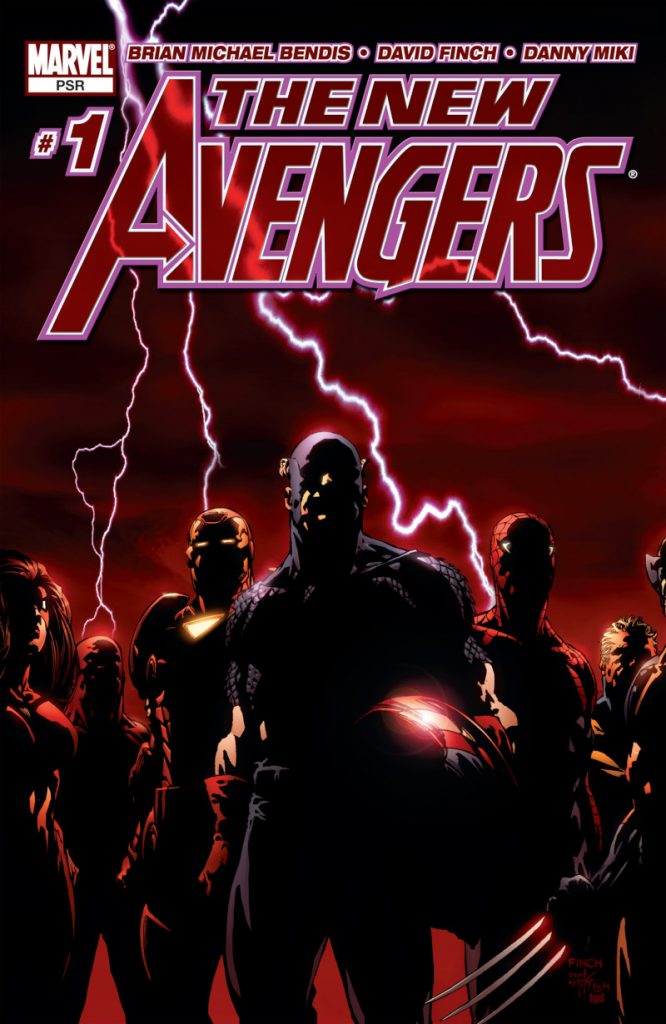
While Avengers Disassembled was a big story for Marvel, it’s worth noting that it was a means to an end as much as anything. It was not the big concept everyone was excited about from that retreat. That was New Avengers, a new title that would feature Avengers stalwarts like Captain America and Iron Man, unaffiliated superstars like Spider-Man and Wolverine, and Bendis favorites like Luke Cage and Spider-Woman. They just had to figure out how to get there.
Bendis: It became, “Well, if we’re going to start the Avengers with that new chapter,” with New Avengers being a new chapter, “Then let’s end this chapter starting with issue #500, a real milestone place for the characters.” And I thought, “Oh man, let’s blow up everything,” but in the most fun way.
Brevoort: We’ll do this whole thing and then out of that will come New Avengers, where we’ll put these characters together.
The promise of New Avengers was why Avengers Disassembled existed at all. It was the path to a new era for a new team. How Bendis got to this squad of A-listers was up to him, Brevoort, and everyone else. What mattered most to the room was the destination. Everyone viewed it as one with great potential — even Brevoort.
Brevoort: As much as I argued, and I certainly was defending my existing creative team and defending my ego and pride, I always knew New Avengers would work. If you put Spider-Man, Wolverine, and the big characters in Avengers, that’s going to work. It was less about that and more about, “You’re trashing this thing that I’ve just been building with this other team and we’re treating them not terribly well.” That as much as anything was the concern.
Bendis: The subjects that blew up the internet would often blow up the (retreats). And sometimes you would look over to the people in charge, like Dan Buckley, and say, “Oh, this isn’t happening. We can argue about it all day, but they’re not going down this road.” And sometimes you’d look over to him and he’d have cartoon dollar signs in his eyes. And with this, I looked over at him, and it was the first time I saw Dan Buckley and thought, “We are definitely going to do this, whatever we are doing.”
Brevoort: They were very much on board with this. Everybody in the room could see, “New Avengers will work.”
subscribers only.
Learn more about what you get with a subscription
Personal take: I find it to be an exciting superhero blockbuster.↩
Avengers #500 kicked off the storyline with an issue that arrived on July 28th, 2004.↩
One that even shares a key player from this story in Brevoort.↩
I tried to reach Finch for this piece as well but unfortunately had no luck.↩
This was around 2003.↩
This was a far cry from Bendis’ first retreat. That was post-bankruptcy Marvel, and it found a small collection of creatives and Marvel staff sitting around a card table in the publisher’s break room.↩
The notable Iron Man storyline from writer Warren Ellis and artist Adi Granov that was a key storyline in the movie Iron Man 3.↩
Bendis said he learned an important lesson from this, which was that in your “enthusiasm and excitement, you can be trying to get a job without realizing that you may be messing up someone else’s gig.” It’s something he has been conscientious of and tried to avoid ever since.↩
Personal take: I find it to be an exciting superhero blockbuster.↩
Avengers #500 kicked off the storyline with an issue that arrived on July 28th, 2004.↩
One that even shares a key player from this story in Brevoort.↩
I tried to reach Finch for this piece as well but unfortunately had no luck.↩
This was around 2003.↩
This was a far cry from Bendis’ first retreat. That was post-bankruptcy Marvel, and it found a small collection of creatives and Marvel staff sitting around a card table in the publisher’s break room.↩
The notable Iron Man storyline from writer Warren Ellis and artist Adi Granov that was a key storyline in the movie Iron Man 3.↩
Bendis said he learned an important lesson from this, which was that in your “enthusiasm and excitement, you can be trying to get a job without realizing that you may be messing up someone else’s gig.” It’s something he has been conscientious of and tried to avoid ever since.↩
It followed Avengers #84 because of legacy number math.↩
Bendis said this with facetious joy.↩
More on that in a second.↩
That’s where the conversation about Hawkeye’s value came up.↩
The reason he asked for one is he didn’t want to affect other books that may have been using certain characters.↩
Brevoort emphasized that from a purely plot standpoint, it didn’t totally add up that the Avengers allowed a supervillain to collect his daughter who was just responsible for the deaths of multiple team members. But, again, it was a good moment.↩
This proved to be important down the line. When Joss Whedon and John Cassaday’s Astonishing X-Men fell behind schedule, Bendis and Olivier Coipel stepped in for a story built from that beat that was just meant to be a crossover but eventually graduated to full out event status. That was House of M.↩
I believe this is also the first time I’ve had multiple footnotes in the row, so that’s exciting too!↩
Bendis also noted this might be why some fans responded as strongly as they did about what was happening.↩
It was years before he was seen again, but no one could have known that at the time.↩
It’s collected with Avengers Disassembled, which makes sense because it’s clearly built from that story.↩
This is true for the most part. Hawkeye got a show, Scott Lang had a trilogy of movies, and The Vision has a show coming up even if you don’t count WandaVision. Jack of Hearts is still waiting for his turn, though!↩
Personal take: I find it to be an exciting superhero blockbuster.↩
Avengers #500 kicked off the storyline with an issue that arrived on July 28th, 2004.↩
One that even shares a key player from this story in Brevoort.↩
I tried to reach Finch for this piece as well but unfortunately had no luck.↩
This was around 2003.↩
This was a far cry from Bendis’ first retreat. That was post-bankruptcy Marvel, and it found a small collection of creatives and Marvel staff sitting around a card table in the publisher’s break room.↩
The notable Iron Man storyline from writer Warren Ellis and artist Adi Granov that was a key storyline in the movie Iron Man 3.↩
Bendis said he learned an important lesson from this, which was that in your “enthusiasm and excitement, you can be trying to get a job without realizing that you may be messing up someone else’s gig.” It’s something he has been conscientious of and tried to avoid ever since.↩
